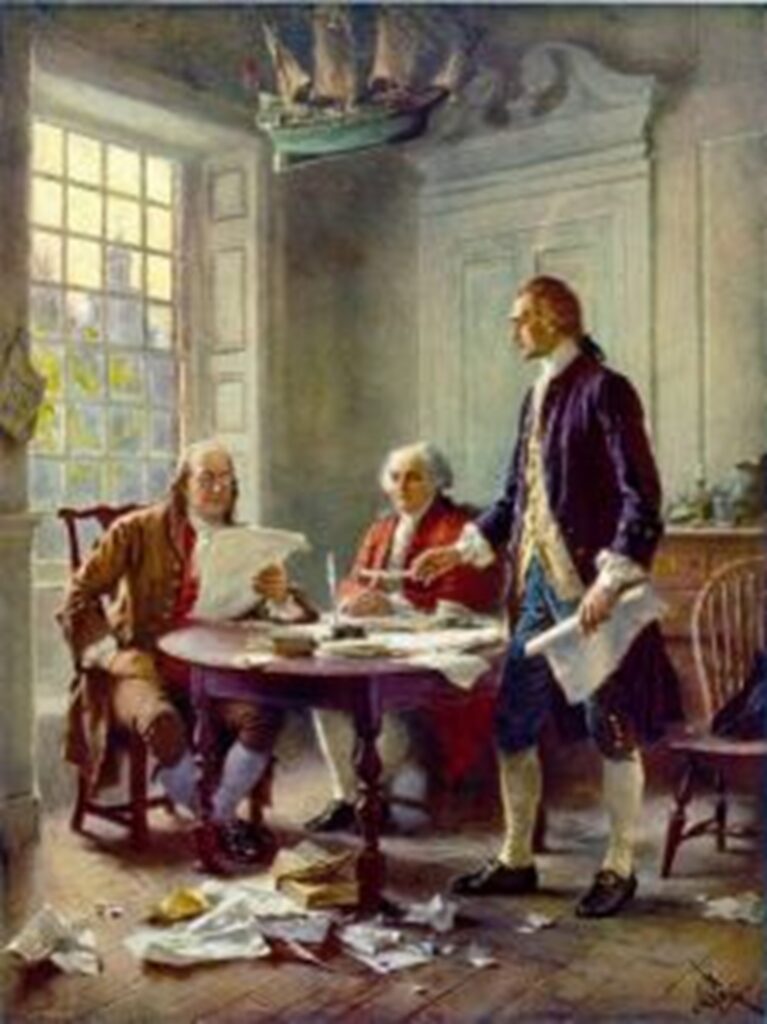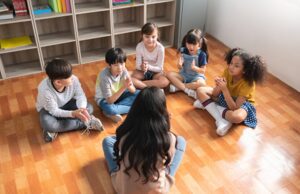WE THE PEOPLE
Education Resource
By Dr Charles Margerison
Psychologist
The American Revolution & US Democracy
‘We The People’ are the first three words of the American Constitution.
The phrase reflects the people’s right to have their voice heard and respected in the decisions made by those elected to govern the country.


Curriculum Resources
All schools in the USA are required to educate students on the history of the American Revolution, the Constitution, and how the first Government was formed. Also, students gain an understanding of their civic rights and duties. This is an approach that engages students, rather than just providing information.
This can now be done through classroom participative learning, via a resource titled ‘We The People – An Education Resource.’
The key features are –
- The resource is designed for students in the age range of 8 to 15 years.
- It can be used in History, Social Studies, Civics, and other lessons about the American Government.
- Lesson plans are provided for key events that occurred between the year 1765 and the inauguration of the first USA Government in 1789.
- Each of the lesson plans are for a duration of 45 minutes to an hour.
- The focus in each lesson is to have students learn by taking the roles of Patriots and Colonists, plus others involved.
- Educators can decide which of the sixteen action events during the period from 1765 to 1789 they wish to introduce, and develop a series of lessons on different aspects of the American Revolution.
Learning Via Participation

As a start point in each lesson, all students are shown a 5-minute video that highlights specific events, such as the Boston Tea Party in 1773, or the Declaration of Independence in 1776.
The educator then allocates students into teams, designated as A for Patriots and B for Loyalists, with 4 or 5 per group. The A designated groups are asked to put forward a case ‘for’ the Revolution. The B designated groups are asked to put forward the case ‘against’ the Revolution. In doing so, the students are involved in virtual learning as they play the roles of Patriots and Loyalists.
During the last five or ten minutes of the class, the tutor can review the key learning points and add any points of explanation, plus outline project work that may be required.
Time & Activities
- 5 mins – outline by the educator of the lesson topic and purpose.
- 5 mins – video presentation on a key period of the American Revolution.
- 15 mins – student group discussions during which they take on roles ‘for’ and ‘against’ the changes.
- 10 mins – presentations of the main points by each group.
- 10 mins – educator’s summary – review of key learning points from the student presentations with explanations, plus allocation of follow up work.
Student Views
Feedback from students indicate they learn in various ways.
‘The video was helpful, as it gave an insight into the situation faced by the colonists. They had to choose to become a revolutionary, or to continue as colonists.’
‘The group discussion enabled me to gain the views of others, and clarify my decision to be a Patriot or a Loyalist.’
‘Talking through what we wanted from a new system of government enabled me to understand the issues, rather than just reading about them in a book.’
Teacher’s Views
The teachers also indicated important pointsarising:
‘I could see that the students were very engaged in the group discussions and learning from each other, which is important.’
‘We encourage social emotional learning and this was a good example, as students certainly showed their emotions in the way they expressed their views.’
‘The opportunity to debate gave students the chance to develop their conversation skills, and learn by sharing and comparing ideas.’
Democracy and Classroom Debates


The educational approach in ‘We The People’ involves students learning about the American Revolution through role play and re-enactment. In this way they learn about the foundation of democracy in the USA.
In the process, students develop skills required to participate in the democratic process. The classroom discussions reflect the democratic system, where political parties are ‘for’ and against’ proposals and priorities.
Democracy depends on everyone understanding the language and process of participation. ‘We The People’ education resource enables educators to engage students in discussions about democracy, and also links these to specific curriculum issues at the same time.
Topics and Time
The resource is arranged in a flexible way. Teachers can choose the order in which they wish to use the materials and topics, depending on their requirements. The resource covers the major events that took place from 1765 onwards. In that year, a group called the Son’s of Liberty encouraged colonists to rebel under the slogan ‘no taxation without representation.’
For reference, the full version of the lesson plans linked to topics in the ‘We The People’ education resource are as follows :
1 – Son’s of Liberty.
2 – Who Do You Support?
3 – Boston Tea Party.
4 – First Continental Congress
5 – Native Americans and Slaves.
6 – Second Continental Congress.
7 – Congress Declares Independence.
8 – The Fourth of July.
9 – We Hold These Truths.
10- The Battlefields.
11 – Our Glorious Patriots.
12 – Victory – We’ve Won The War.
13 – The Barbecue
14 – Please Save The USA.
15 – Change The Law.
16 – The First Government.
17 – Long Live The USA.
18 – Reprise.
Multi-Media Education
The resources enable teachers to engage students using modern technology. The videos initiate understanding and discussions can be shown via a classroom television or computers or tablets. In addition, the ‘We The People’ website resources provide the support information that can be made available as project work, following the classroom discussions.
The ‘We The People’ education resource uses technology and media formats that are already available in schools, requiring no further investment or costs for schools.
We The People Benefits
In discussion with teachers, who have used the resource, the following benefits have been noted.
A. Supports student learning through participation.
B. Links directly to the curriculum on the American Revolution.
C. Helps students develop their conversation and presentation skills through group discussion.
D. Enables students to learn about the foundations of democracy in the USA, and the social issues involved.
E. Supports students’ personal understanding of their society and their deocratic rights and responsibilities.
F. Helps students with their personal development through group discussions and presentations.


Summary
The ‘We The People’ education resource provides a series of topics that help students in both Primary and Secondary levels to learn about the American Revolution through sharing and comparing views with others.
This interactive approach provides a socio-emotional approach to education, rather than the traditional rational information assessment process.
Students discover how the important events between 1765 and 1789, are still relevant and affect their lives today.
The role of the educator moves from the traditional provider of information to the coordination of student learning by encouraging discussion and debate.
This is important in the move towards action based experiential learning. After all, the American Revolution was a time when everyone involved had to learn from action.









